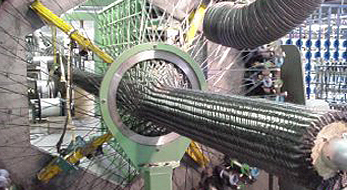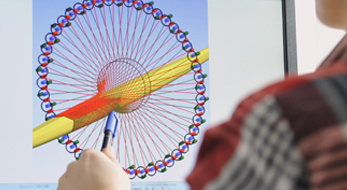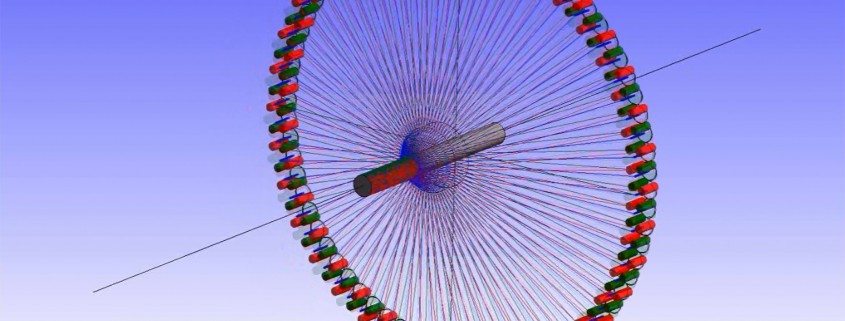A new fibre-overbra iding technique has the potential to improve efficiency in the production of composite structures. A new simulation programme reduces costly trial runs with the modern overbraiding machine.
iding technique has the potential to improve efficiency in the production of composite structures. A new simulation programme reduces costly trial runs with the modern overbraiding machine.
NLR is assisting company Eurocarbon with the refinement of braiding technology used to produce hollow composite structures. The project – ‘Innovating the overbraiding design process to optimise the development of composite aircraft structural components’ (OBODAS) – focuses mainly on efficiency. The simulation programme will enable Eurocarbon to achieve significant savings in development and production costs for composite structures. On paper, the principle of overbraiding is simple: a machine equipped with dozens of spools, wraps fibres around a mould that is shaped like the composite component to be produced. The fibre form is then impregnated with resin, which results in the composite structure. But the process has drawbacks. The shape of the structure can affect the distribution of the fibre layers and thus in turn alter the material properties of the entire composite structure. To counteract these adverse effects, the braiding machine has to undergo trial runs to determine the correct settings. These tests are costly in terms of both labour and material. This is where the results of the OBODAS project are helpful.
 NLR engineers based the development of this simulation environment on Knowledge Based Engineering techniques, applying available knowledge of the overbraiding process to simulate and optimise all aspects of the process. The data generated by the simulation programme can be directly converted into settings for the overbraiding machine. Trials with the simulation programme, including the user interface, have already confirmed that OBODAS works effectively.
NLR engineers based the development of this simulation environment on Knowledge Based Engineering techniques, applying available knowledge of the overbraiding process to simulate and optimise all aspects of the process. The data generated by the simulation programme can be directly converted into settings for the overbraiding machine. Trials with the simulation programme, including the user interface, have already confirmed that OBODAS works effectively.
In the OBODAS project, NLR worked in collaboration with the University of Twente and Eurocarbon. The project was supported by NL Agency of the Dutch Ministry of Economic Affairs.
Also visit our Collaborative Engineering capability page.


